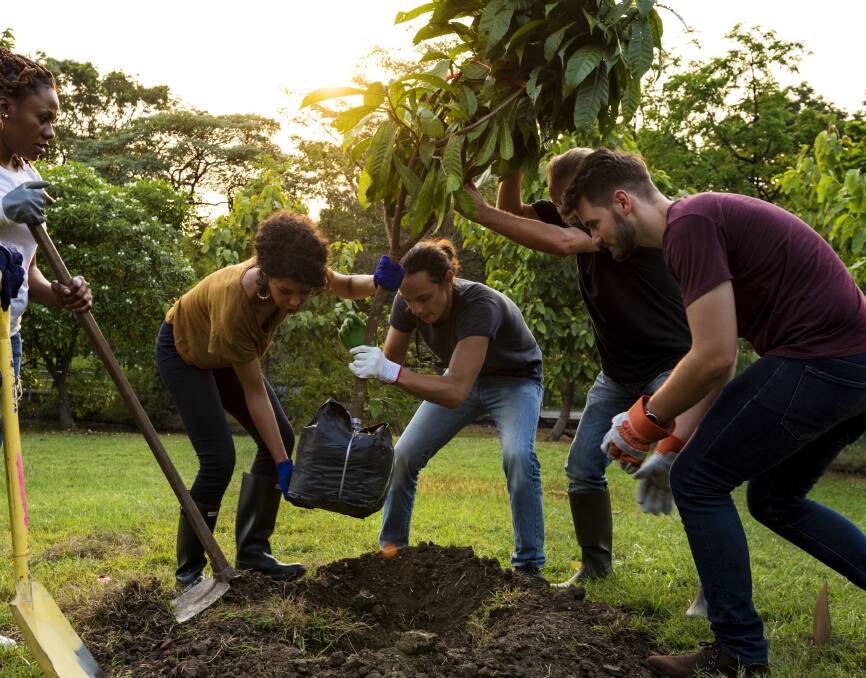
Deciduous trees and shrubs such as roses, can be transplanted now with very few problems.
Plants can be lifted directly from the ground now while they are dormant and moved to their new position.
Before beginning root pruning mark the north-facing side of the tree or shrub with a ribbon so it can be reoriented.
For a transplant to be successful, you must include as much of the plant's root system as is reasonably possible.
In general, you'll need at least 20 to 30 centimetres of root ball diameter for every 2.5 centimetres of trunk diameter.
You might also like:
Be sure to prune the roots with clean cuts using a sharp spade and maintain as many of the lateral roots as possible.
Every effort should be made to maintain the integrity of the root ball with soil intact and once lifted wrap the root ball in hessian or similar material for ease of transportation to the new site.
Machinery may be required to assist with relocating larger transplants.
Evergreen plants such as citrus, camellias and azaleas are either flowering or in bud set during late winter, so wait until immediately after flowering for greater success.
Most evergreen shrubs can be successfully transplanted, including conifers and buxus commonly known as box.
Transplanting evergreens is best done in late spring or early autumn.
First you need to prepare the plants for the move ahead, this will require root pruning at least three weeks prior to transplanting, six weeks if you have the patience as the longer the lead time the greater the chance of success.
Using a sharp spade sever the roots just beyond the drip line to at least a spade depth on all sides of the plant.
Apply a seaweed solution to stimulate root activity and wait for three to six weeks. During this period renovate the soil where the plants are to be moved.
Cultivate and add some compost or similar organic matter to produce a friable soil.
Transplants will be susceptible to water stress for the first year after transplanting as they would have lost a significant amount of their root mass.
It is important that plants are adequately watered particularly in windy and exposed sites over the hot summer months to ensure good root establishment.
Mulch newly transplanted trees and shrubs to reduce moisture loss and only stake plants if necessary and avoid the temptation of applying fertiliser until the plant begins to show signs of active growth.
- Check out how you can save with the latest deals for your home and garden with discount codes from Australian Coupons.

